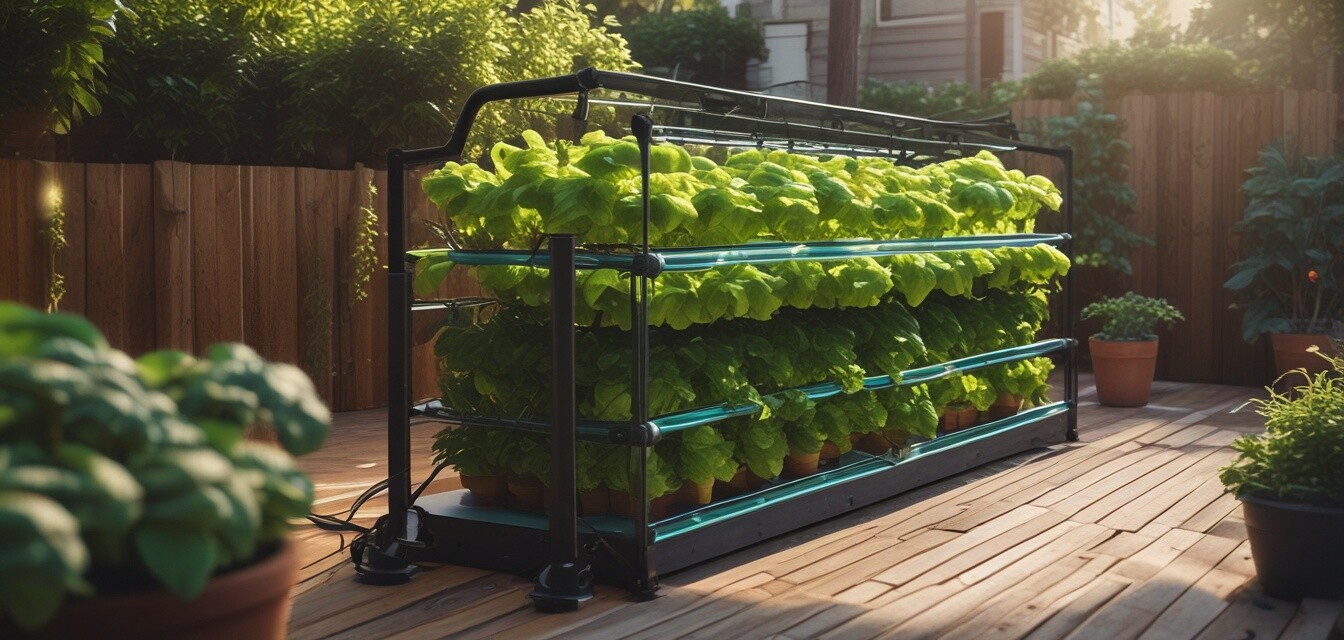
Creating a Hydroponic System in Your Backyard
Key Takeaways
- A hydroponic system allows you to grow plants without soil, maximizing space and yield.
- There are various types of hydroponic systems that cater to different needs and spaces.
- Setting up a DIY hydroponic system can be simple and cost-effective.
- Monitoring and maintaining nutrient levels is crucial for plant health and growth.
Are you looking to grow your own vegetables and herbs in a limited space? Creating a hydroponic system in your backyard is the perfect solution. Not only does it maximize your gardening potential, but it also encourages efficient use of water and nutrients while allowing you to enjoy fresh produce right at home. In this article, we will take you step-by-step through the process of setting up your own DIY hydroponic system, making gardening accessible and fun!
What is Hydroponic Gardening?
Hydroponic gardening is a method of growing plants without the use of soil. Instead, these plants receive a nutrient solution directly to their roots, allowing for faster growth and higher yields. This technique is especially useful in urban settings where space is limited. Whether you want to grow herbs or vegetables, hydroponics can provide optimal conditions for plant growth.
Benefits of Hydroponic Systems
- Efficient use of water
- Space-saving design
- No weeding required
- Year-round growing season
- Cleaner produce compared to traditional gardening
Choosing a Hydroponic System Design
Before you start building, it’s essential to understand the various hydroponic system designs available. Here are some popular options:
| Hydroponic System Type | Description | Best For |
|---|---|---|
| Deep Water Culture | Plants are suspended in a nutrient solution with their roots submerged, allowing for great oxygenation. | Beginners and small-scale growers |
| Nutrient Film Technique | A thin film of nutrient solution flows over the roots of the plants, ensuring nutrition and oxygen. | Advanced growers |
| Flood and Drain (Ebb and Flow) | Plants are flooded with nutrient solution at intervals, then drained away for aeration. | Variety of crops |
| Wick System | A passive system that uses a wick to draw nutrient solution into the growth medium. | Very low maintenance |
Step-by-Step Instructions to Build Your Hydroponic System
Step 1: Gather Materials
To create your hydroponic system, you will need the following materials:
- Storage container (for your nutrient solution)
- Net pots (for holding your plants)
- Growing medium (such as clay pellets or rock wool)
- Nutrient solution (specific to your planned crops)
- Pump (for water circulation)
- Air stones (for aeration)
- Timer (to automate the watering schedule)
Step 2: Set Up Your Container
Choose a storage container that can hold ample nutrient solution and fit the number of plants you want to grow. Cut holes in the lid for your net pots to sit comfortably. Make sure the size and placement of the holes allow enough space for each plant’s growth.
Step 3: Prepare the Growing Medium
Fill each net pot with your chosen growing medium, ensuring it can hold moisture but also allows for proper drainage and aeration. Place the net pots into the holes you cut in the lid of your container.
Step 4: Mix Your Nutrient Solution
Follow the manufacturer's instructions to create the right concentration of nutrient solution in your storage container. Regularly check the pH level of the solution to ensure it’s at the optimal level for plant growth.
Step 5: Set Up Your Pump and Air Stones
Connect your pump to the storage container and place air stones in the nutrient solution. This will help oxygenate the water, which is crucial for the health of your plants. Turn on the pump to ensure that the solution circulates adequately through the system.
Step 6: Monitor and Maintain
Once your system is set up, keep an eye on the nutrient levels, pH, and the condition of your plants. Make adjustments as necessary and ensure your hydroponic system continues to provide a healthy environment for growth.
Tips for Successful Hydroponic Gardening
Beginners Section
- Start with easier plants like lettuce, herbs, or strawberries.
- Ensure your hydroponic system receives enough light, using grow lights if necessary.
- Regularly check water levels and nutrient concentrations.
- Keep the system clean to prevent algae and mold growth.
- Consider adding a monitoring system to track vital parameters.
Final Thoughts
Creating a hydroponic system in your backyard can be an enriching experience. It provides an opportunity to produce your own fresh food year-round while efficiently using space and resources. Embrace the journey of hydroponic gardening and watch your plants thrive in this innovative system. Don't forget to explore our other [DIY projects](https://hydroponicgardening.com/blog/diy-projects) for more inspiration to enhance your gardening experience!
Pros
- Space-efficient growing method.
- Faster plant growth compared to soil gardening.
- Less water usage overall.
- No need for pesticides or herbicides.
Cons
- Upfront costs can be higher than traditional gardening.
- Requires consistent monitoring of nutrients and pH.
- Possible mechanical failures with pumps and systems.

